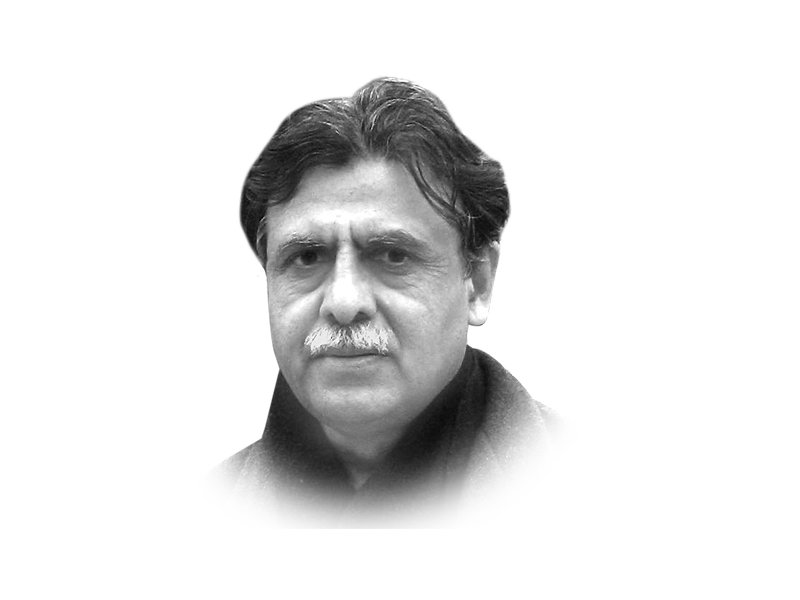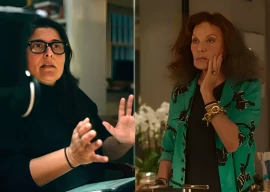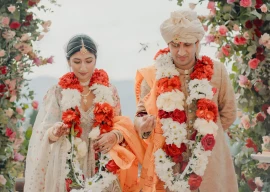
I belong to the pre-polythene bag generation. In the good old days, shopping from the grocery store or from vendors was brought home in newspaper wrappers. Extra care was taken to preserve the piece of old newspaper as reading material before disposing it of. For middle class families, newspapers were still not a household item. The barbershop was the usual place to flip through a newspaper, with barbers using these as a ploy to keep the waiting customer engaged. Two weeklies, Qandeel and Chattan, were available in my hometown, with the latter known for its crisp articles and edited by the fiery orator and hard-hitting writer Agha Shorish Kashmiri. He had the distinction of having gone to jail many times.
As I recall, in my early school days, Kohistan and Tameer were the widely known papers in the northern parts of Punjab, especially in the Rawalpindi region. The former was edited by Nasim Hijazi, the renowned novelist who dabbled in stories from Muslim history with his hero always astride a horse, brandishing a sword. Down in mainland Punjab, apart from Kohistan, Imroz and Nawai Waqt were widely read. A visit to Karachi would familiarise a reader with Jang and Anjam, and in later years with Hurriyet too. In English, we had the progressive Pakistan Times and Civil and Military Gazette from Lahore. The latter was a legacy of the famous English writer Rudyard Kipling. Dawn was Karachi based, with the then capital of Pakistan also boasting of several eveningers. With the moving of the interim capital to Rawalpindi and General Ayub Khan enforcing the first martial law in the country, the whole region came into sharp focus. Jang moved its footprints from Karachi to Rawalpindi. It brought pictorial journalism to the Urdu press in a big way. As I recall, coloured supplements with portraits of foreign dignitaries on their visits to Pakistan would be featured, ranging from Gamal Abdel Nasser of Egypt to Reza Shah Pahlavi of Iran. The normal publication of newspapers was confined to just six pages but these contained a great deal of readable material catering to a wide audience. Writers like Shaukat Thanvi and Ibrahim Jalees were known for their daily columns punctuated with humour and pun. Renowned fiction writer Ahmed Nadeem Qasimi was associated with Imroz writing under the pen name Anqa, and if my memory serves me right, Intizar Husain wrote for a newly launched paper Mashriq. An old veteran Peer Ali Muhammad Rashdi was known for his column, Mashriq-o-Maghrib in Jang, writing on every topic under the sun.
I developed a better sense for various newspapers of the country when I started college. A presidential election was announced in the country around this time with the Quaid’s sister Fatima Jinnah pitched against the all-powerful General Ayub. Ms Jinnah’s presence electrified the scene as the entire opposition lined up behind her, giving quite a few jitters to the government. Her media campaign in this part of the western wing was spearheaded by Nawai Waqt, with the discourse focusing on the revival of the parliamentary system, adult franchise and the restoration of fundamental rights. Circulation of pro-opposition papers jumped manifold but the Pakistan Times and Imroz were taken over by the government under the garb of the National Press Trust. This period also saw people starting to subscribe to newspapers at their homes. Based on euphoric reporting and analysis, fantastic forecasts were made about the opposition’s victory. There was also evidence of this on the ground as wherever Ms Jinnah went, she attracted mammoth crowds giving real heartburn to the ruling elite. The independent press did a remarkable job in mobilising public opinion. But when the crunch came, the results were very different. While the general public had been galvanised, it did not have the right to vote. It was only a few thousand Basic Democrats who had that right and they knew where to cast the die. General Ayub won comfortably although he nearly lost in Karachi.
The 1965 war was yet another watershed, which saw an exceptional synergy between the soldier on the front and the public at the backend, with the media, including radio and the newly formed PTV, providing a seamless connect. The nascent electronic media of the time came up with some classic tunes, lyrics and renditions that produced a lasting impact. Jamiluddin Aali, Raees Amrohvi, Sufi Ghulam Mustafa Tabassum and many others were immortalised through the voices of Mehdi Hasan, Noor Jehan and Ustad Amanat Ali.
Soon after the war ended, I landed in Dhaka to pursue my undergraduate studies on a student exchange programme. The East Pakistani media presented an interesting picture and great clarity about the issues faced by the people of that region. The English press was represented by the Pakistan Observer, the Morning News and a left-leaning weekly, the Holiday, which hosted two West Pakistani columnists namely Husain Naqi and Nusrat Nasrullah who were widely read. The Pakistan Observer was owned by business tycoon and former foreign minister Hamidul Haque Chaudhry, who at the time was an active member of the National Democratic Front, an opposition alliance headed by Noorul Amin. The paper maintained an independent course. A seasoned journalist, Abdul Salam, was the editor. Its opinion and editorial section was headed by a relatively young journalist, Nasim Ahmed. The Morning News was owned by the National Press Trust though its well-respected editor, Syed Badruddin, was able to maintain its credibility. Dawn also had some circulation though it reached Dhaka a day late. East Pakistanis had an association with Dawn as it had a Bengali editor, Altaf Husain, who later became a minister at the centre.
The Bengali press was prominently represented by Ittefaq, Donik Pakistan and Sang Bad. The first of these was a pro-Awami League paper with wide circulation. The media on the whole had one common strand — articulating the case of economic and political rights of the people of East Pakistan. Every national issue was seen through that prism. This narrative was built on the theme of growing economic disparity between the western and eastern wings based on discriminatory state policies, which favoured the former. Despite having a clear majority, Bengalis did not have a say in decision-making on the political plank. Key institutions, namely the civil service and the armed forces, had a disproportionate representation from West Pakistan. In the 1970 elections, Bengalis gave an unambiguous verdict as to what kind of federation they wished to see. In this marathon campaign, the media played a decisive role in mobilising public opinion and taking people to the polling stations. The euphoria of the results, however, did not last long with events taking an ugly turn and precipitating in civil disobedience followed by a military crackdown.
In my next article, I will dilate bit more on the 1970 elections, which were the fairest yet the most divisive elections in the country’s history, with the media also reflecting the deep divisions present in the two wings. This was to be followed by a spate of military and so-called civilian rules with their attendant consequences.
Published in The Express Tribune, June 28th, 2016.
Like Opinion & Editorial on Facebook, follow @ETOpEd on Twitter to receive all updates on all our daily pieces.














































COMMENTS (9)
Comments are moderated and generally will be posted if they are on-topic and not abusive.
For more information, please see our Comments FAQ